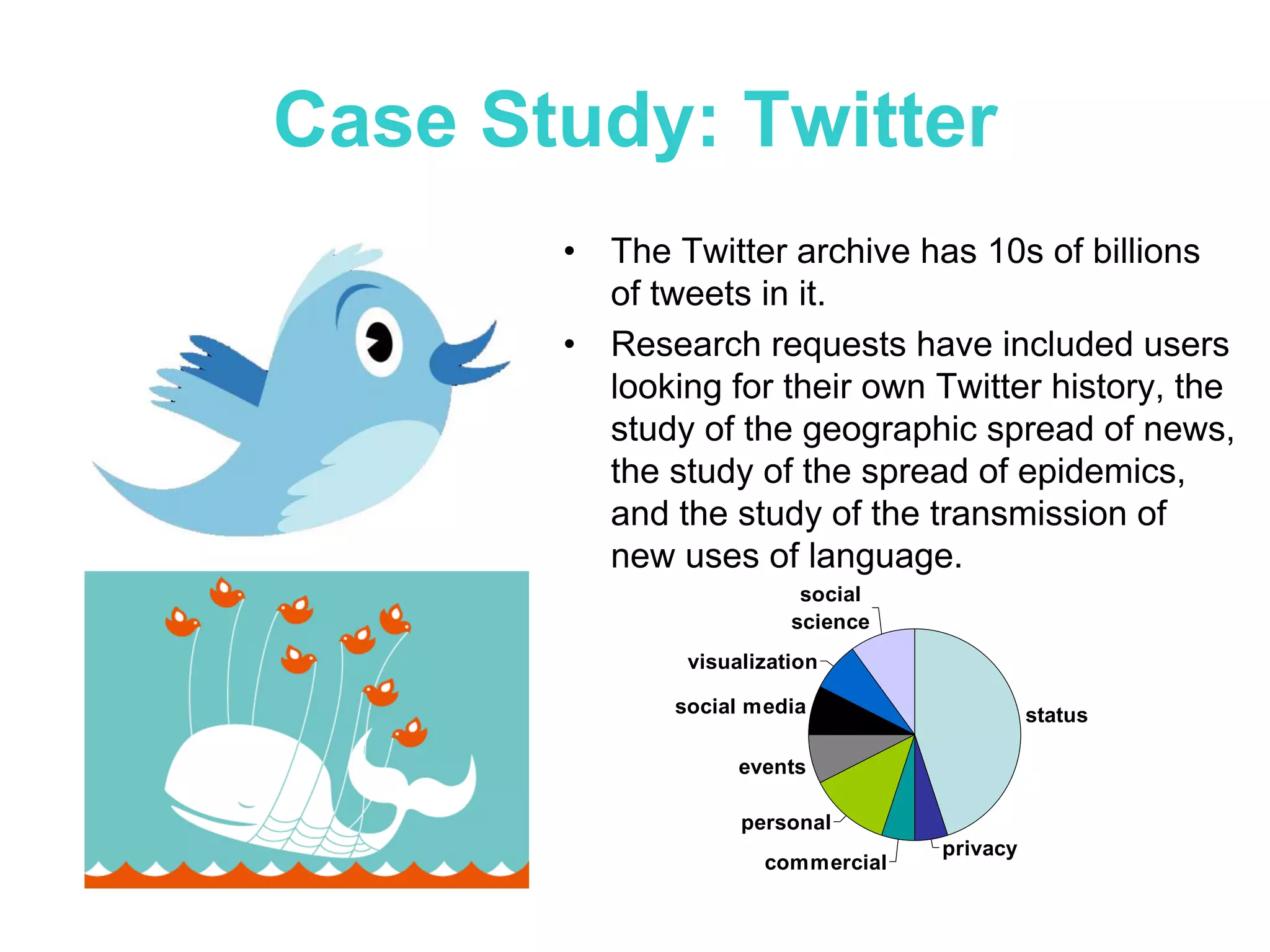This document discusses how digital collections are now considered data rather than just records or content. It notes that researchers want to analyze entire collections as data sets rather than individual records. Large digital collections like web archives, historic newspapers, and Twitter archives contain billions of records that researchers want to query, analyze, and visualize as data. Institutions are collaborating through groups like the National Digital Stewardship Alliance and developing open source tools like ViewShare to support access to and preservation of these "big data" collections.










































